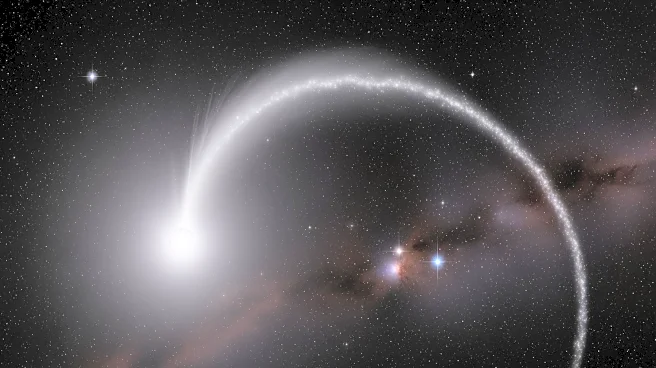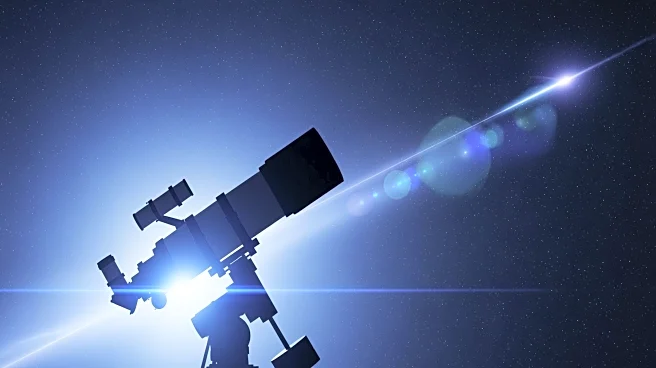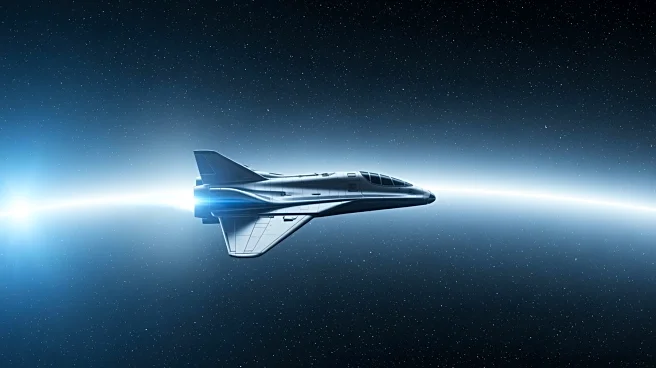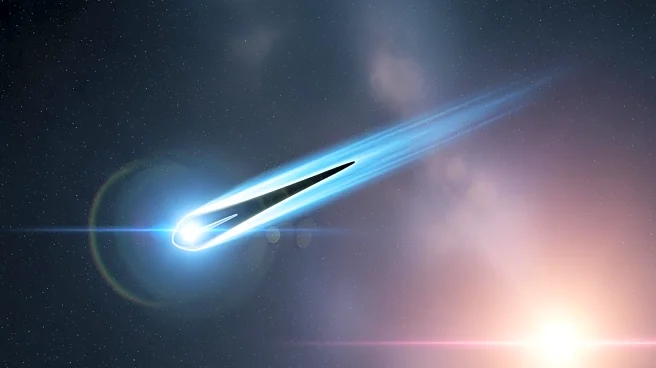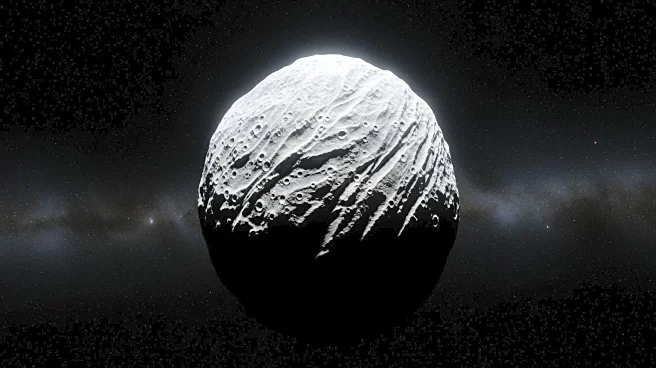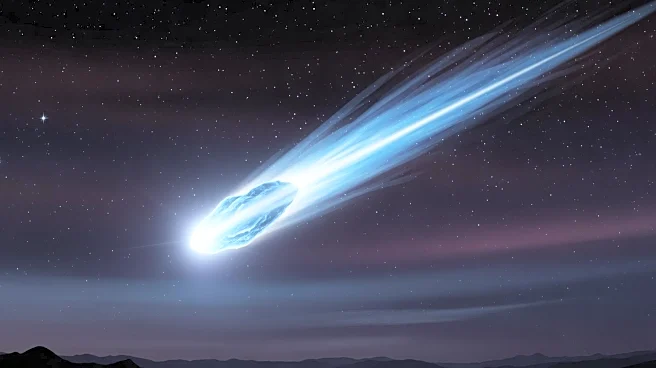What's Happening?
The interstellar object 3I/ATLAS continues to intrigue scientists with its unique anti-tail and multiple tails, as observed in recent images. The anti-tail phenomenon, which is not fully understood, may
be due to the release of large dust particles or ice fragments. These particles are significantly larger than typical comet dust, affecting their interaction with solar radiation. The possibility of technological thrusters contributing to the anti-tail is also being considered. As 3I/ATLAS approaches Earth, further data collection is expected to shed light on its nature.
Why It's Important?
The study of 3I/ATLAS offers a rare opportunity to understand the characteristics of interstellar objects, which can provide insights into the conditions of other star systems. The presence of an anti-tail challenges existing cometary models and could lead to new theories about the behavior of such objects. This research not only enhances our understanding of the universe but also stimulates public interest in space science, encouraging support for scientific inquiry and exploration.
What's Next?
As 3I/ATLAS approaches its closest point to Earth on December 19, 2025, scientists will continue to gather data to determine the nature of its anti-tail. Spectroscopic analysis will help distinguish between natural and potential artificial origins of the observed phenomena. The findings could have significant implications for our understanding of interstellar objects and their interactions with solar systems.
